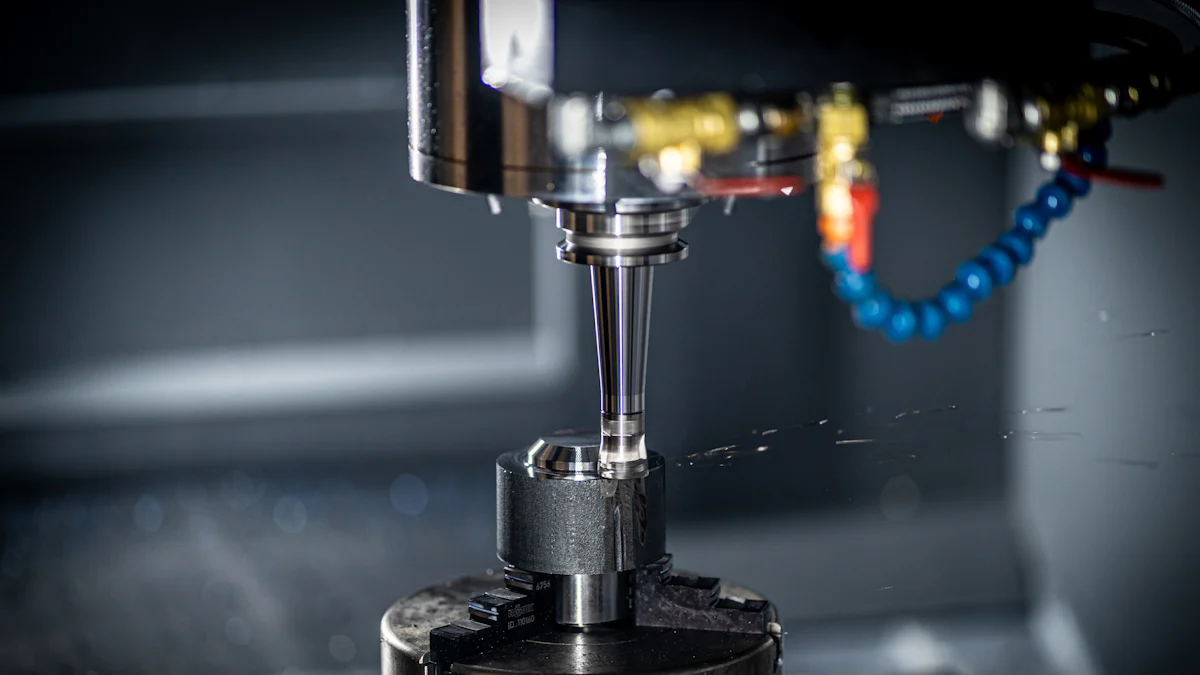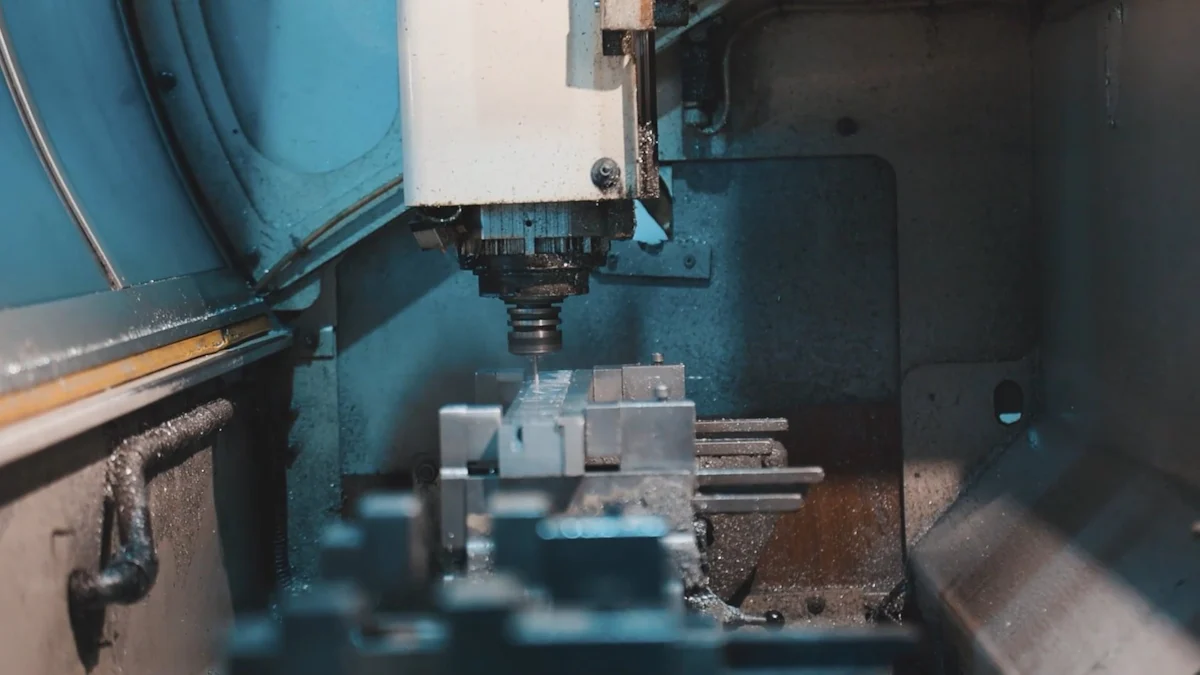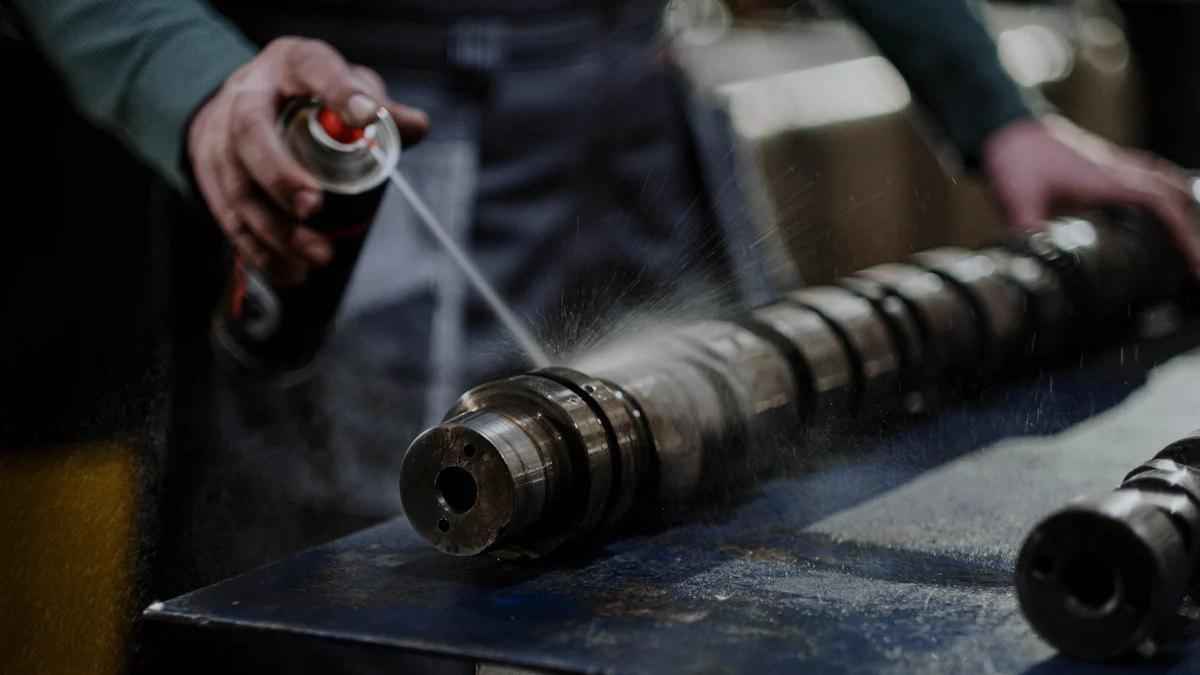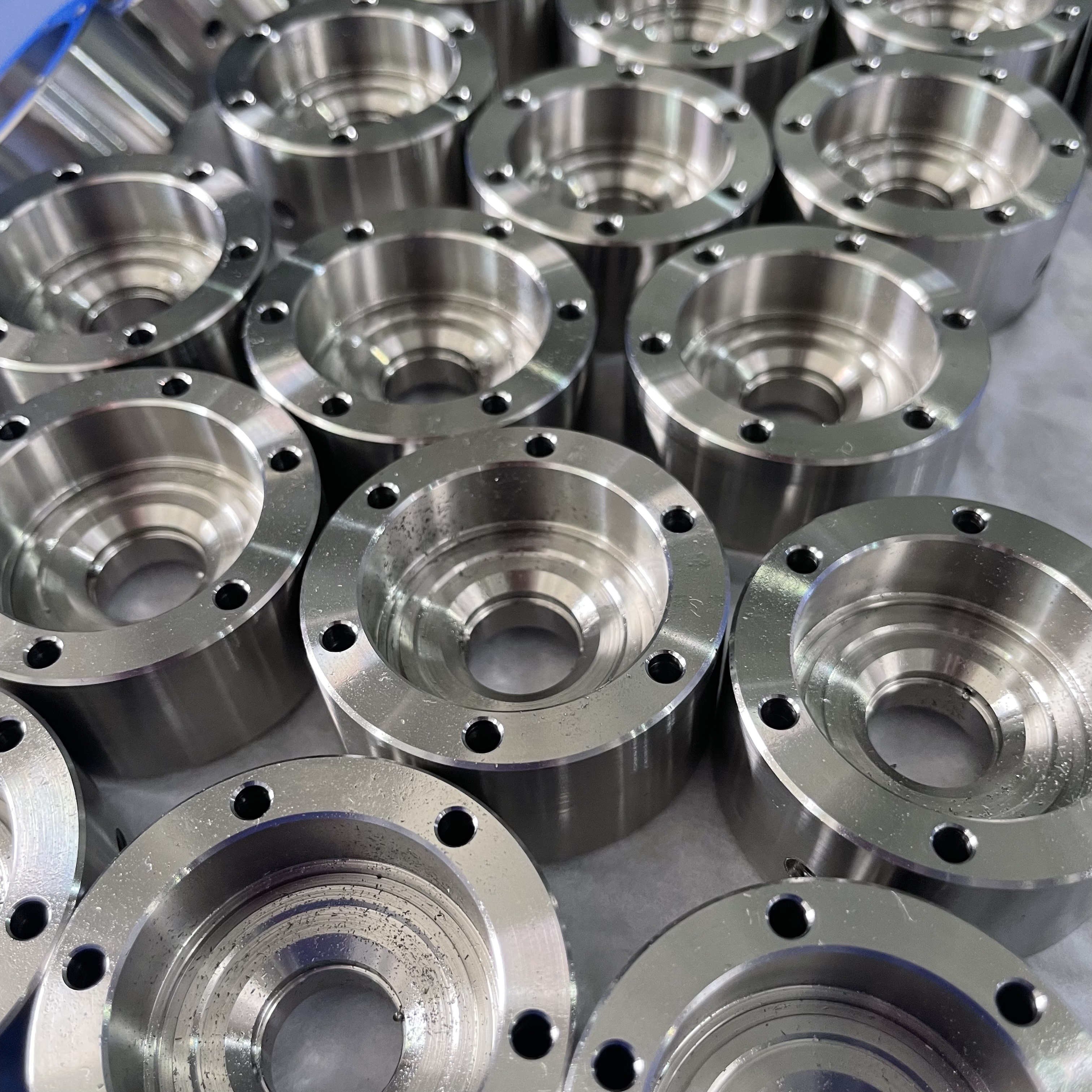Shock-Absorbing Materials in CNC Machined Components

Shock-absorbing materials play a vital role in CNC machining. Materials like Sorbothane, polyurethane, silicone, and aluminum alloys reduce vibrations and improve durability. These materials protect machinery by minimizing shock and friction during operation. This reduces long-term damage and extends equipment lifespan. You can also benefit from lower maintenance costs and enhanced system performance. Industries like automotive and aerospace rely on these materials to handle operational loads while reducing stress on components. By choosing the right materials, you ensure better performance and longer-lasting machinery.
Key Takeaways
Materials like Sorbothane and polyurethane absorb shocks and reduce vibrations.
These materials help machines last longer and need less fixing.
Choosing the best material depends on strength, weight support, and environment.
Car and airplane industries use these materials for safety and better work.
New green materials are eco-friendly and still work really well.
What Are Shock-Absorbing Materials and Their Role in CNC Machining?
Definition of Shock-Absorbing Materials
Shock-absorbing materials are designed to handle energy from impacts and vibrations. These materials absorb and dissipate energy to protect internal components from damage. For example, Sorbothane is a material that combines shock absorption, vibration isolation, and damping properties. It also offers a long fatigue life, making it a reliable choice for many applications.
A shock absorbing material is introduced in the design to transfer the energy from the impact from the surface or chassis directly into the material so the internal components are not damaged. Sorbothane combines shock absorption, good memory, vibration isolation and vibration damping characteristics that’s combined into a stable material with a long fatigue life.
Importance of Shock Absorption in CNC Machined Components
In CNC machining, shock absorption plays a critical role in maintaining the performance and durability of components. Vibrations and impacts can cause wear and tear on parts, leading to reduced efficiency and higher maintenance costs. By using shock-absorbing materials, you can minimize these issues. For instance, materials like aluminum alloys and polyurethane help reduce vibrations, ensuring smoother operation. This is especially important in industries like automotive and aerospace, where precision and reliability are essential.
Key Benefits of Using Shock-Absorbing Materials in CNC Machining
Using shock-absorbing materials in CNC machining offers several advantages. First, these materials improve the toughness and impact resistance of components, making them more durable. Second, they enhance machining properties by reducing vibrations during the machining process. This leads to better precision and surface finish. Third, shock-absorbing materials extend the lifespan of components by protecting them from damage caused by repeated impacts. Lastly, they contribute to cost savings by reducing the need for frequent repairs or replacements. Whether you’re working with high-strength metals like aluminum alloys or specialized polymers, these materials ensure your components perform reliably under demanding conditions.
Types of Shock-Absorbing CNC Materials

Metals
Aluminum Alloys
Aluminum alloys are widely used in CNC machining due to their high strength and lightweight properties. These materials excel in absorbing shocks and vibrations, making them ideal for applications requiring precision and durability. Their excellent machinability allows you to create complex designs without compromising performance. Aluminum alloys also resist corrosion, ensuring long-term reliability in harsh environments. This combination of features makes them a preferred choice for industries like aerospace and automotive.
Steel Alloys
Steel alloys offer exceptional toughness and impact resistance, making them suitable for heavy-duty applications. These materials can handle high loads and repeated impacts without deforming. Steel alloys also provide excellent wear resistance, which enhances the lifespan of CNC machined components. You’ll often find them in industrial machinery where durability and strength are critical. Their ability to absorb shocks effectively ensures smooth operation even under extreme conditions.
Plastics and Polymers
Polyurethane (e.g., PORON®)
Polyurethane stands out for its flexibility and energy-absorbing properties. It can handle repeated impacts while maintaining its shape, making it a reliable material for shock absorption. PORON®, a type of polyurethane, offers consistent performance in applications requiring vibration damping. Its lightweight nature and adaptability make it a popular choice for CNC machining in industries like electronics and automotive.
Silicone-Based Materials (e.g., BISCO®)
Silicone-based materials, such as BISCO®, provide excellent thermal stability and shock absorption. These materials perform well in high-temperature environments, ensuring reliable operation. Their ability to dampen vibrations makes them ideal for precision components. You can use silicone-based materials in applications where both flexibility and durability are essential.
ABS and Nylon
ABS and nylon are versatile plastics with impressive mechanical properties. Nylon, in particular, offers superior toughness and mechanical shock absorption. Its high strength ensures durability under stress, making it suitable for demanding applications. ABS, on the other hand, provides excellent impact resistance and machinability. These materials are perfect for CNC machining projects requiring lightweight yet durable components.
Composites
Carbon Fiber Composites
Carbon fiber composites combine high strength with lightweight properties, making them ideal for shock-absorbing applications. These materials excel in reducing vibrations while maintaining structural integrity. Their resistance to fatigue ensures long-term performance, even in demanding environments. You’ll often see carbon fiber composites in aerospace and automotive industries where weight reduction is crucial.
Glass Fiber Reinforced Polymers (GFRP)
Glass fiber reinforced polymers (GFRP) offer a balance of strength and flexibility. These materials can absorb shocks effectively while resisting wear and tear. GFRP is also lightweight, making it suitable for applications where weight is a concern. Its durability and impact-resistant properties make it a reliable choice for CNC machining in various industries.
Specialized Materials
Sorbothane
Sorbothane stands out as a highly effective shock-absorbing material in CNC machining. This proprietary viscoelastic polymer exhibits a unique combination of properties. It offers excellent shock absorption, vibration isolation, and damping capabilities. You can rely on Sorbothane to handle impacts efficiently, as it absorbs up to 94.7 percent of shock energy. Its high damping coefficient ensures superior performance compared to many other materials.
Sorbothane also provides good memory, meaning it returns to its original shape after deformation. This makes it ideal for applications requiring repeated impact resistance. Its toughness and durability allow it to perform well under demanding conditions. Whether you are working with precision components or heavy-duty machinery, Sorbothane ensures reliable protection against vibrations and shocks.
Neoprene and Rubber
Neoprene and rubber are versatile materials widely used for shock absorption in CNC machining. Neoprene offers excellent resistance to wear, making it suitable for long-term use. It also performs well in various environmental conditions, including exposure to oils, chemicals, and extreme temperatures. This makes it a reliable choice for industrial applications.
Rubber, on the other hand, provides high strength and flexibility. It absorbs shocks effectively while maintaining its structural integrity. You can use rubber in applications where both elasticity and durability are essential. Its ability to dampen vibrations ensures smoother operation of CNC machined components. Both neoprene and rubber are cost-effective solutions for reducing wear and tear on machinery.
By incorporating specialized materials like Sorbothane, neoprene, and rubber, you can enhance the performance and lifespan of your CNC machined components. These materials protect against damage, reduce maintenance costs, and improve overall efficiency.
Factors to Consider When Selecting Shock-Absorbing CNC Materials
Durability and Longevity
When choosing shock-absorbing materials, durability and longevity should be your top priorities. Materials with high strength and impact resistance can withstand repeated shocks without degrading. For example, steel alloys and carbon fiber composites offer excellent strength and durability, making them ideal for heavy-duty applications. You should also evaluate the material's fatigue life. A longer fatigue life ensures that the material maintains its performance over time, reducing the need for frequent replacements.
To assess durability, consider metrics like the damping ratio and load capacity. The damping ratio measures how effectively a material dissipates energy, while load capacity indicates the maximum weight it can handle. These metrics help you determine whether the material can meet your application's demands.
Cost and Budget Constraints
Material selection often depends on your budget. While high-quality materials like Sorbothane or carbon fiber composites may have a higher initial cost, they offer better performance and longer lifespans. This can save you money on maintenance and replacements in the long run.
You should also factor in maintenance costs. Materials with superior durability require less frequent upkeep, reducing overall expenses. Additionally, consider the performance benefits. Reliable shock-absorbing materials enhance safety and productivity, justifying their investment. Always balance cost with the material's ability to meet your specific requirements.
Application-Specific Requirements
Load-Bearing Capacity
Every application has unique load-bearing requirements. You need to select materials that can handle the operational loads without deforming or failing. For instance, steel alloys and polyurethane are excellent choices for applications requiring high load capacity. Use metrics like load capacity and response time to evaluate a material's suitability. A material with a quick response time ensures efficient shock absorption, improving overall performance.
Environmental Conditions (e.g., temperature, moisture)
Environmental factors significantly impact material performance. For applications exposed to extreme temperatures, you should choose materials with high thermal resistance, such as silicone-based materials or aluminum alloys. These materials maintain their integrity under thermal stress.
Moisture and chemical exposure also affect material selection. For instance, neoprene and rubber resist corrosion from moisture, making them suitable for humid or marine environments. The table below highlights how different environmental conditions influence material performance:
Environmental Condition | Impact on Material Performance |
|---|---|
Exposure to Chemicals | Requires high corrosion resistance to maintain integrity. |
Moisture | Necessitates materials that resist corrosion from moisture. |
Temperature Variations | Demands materials that withstand thermal stresses without degrading. |
Humidity | Influences choice of materials that resist corrosion from moisture and salt. |
Marine Environments | Requires materials with superior corrosion resistance. |
Outdoor Applications | Needs materials that withstand weathering and UV exposure. |
By considering these factors, you can ensure that your material selection aligns with the specific demands of your application.
Real-World Applications of Shock-Absorbing Materials in CNC Machined Components

Automotive Industry
Engine Mounts and Suspension Systems
Shock-absorbing materials play a crucial role in improving vehicle performance and passenger comfort. In suspension systems, these materials convert kinetic energy into thermal energy, reducing vibrations and enhancing ride quality. Advanced systems, like adaptive shock absorbers, adjust to driving conditions, ensuring a smoother experience. Crash safety features also rely on these materials to absorb energy during collisions, protecting passengers from severe impacts. By incorporating these materials, you can achieve better control, safety, and durability in automotive components.
Aerospace Industry
Vibration-Dampening Components
In aerospace applications, shock-absorbing materials are essential for maintaining the reliability of critical systems. Pneumatic isolators, for example, absorb low-frequency vibrations during testing, ensuring precise operation of components. Materials like Sorbothane protect sensitive avionics from mechanical energy, preventing damage caused by vibrations and shocks. Fabreeka pads are another example, isolating vibrations in military aircraft to safeguard communication systems and antennas. These materials also enhance passenger comfort by reducing excessive vibrations, which minimizes fatigue and extends the lifespan of aircraft structures.
Industrial Machinery
Shock-Resistant Machine Parts
Industrial machinery benefits significantly from shock-absorbing materials, which improve safety, durability, and efficiency. Common shock-resistant parts include industrial shock absorbers, rubber bumpers, and springs. Industrial shock absorbers convert kinetic energy into thermal energy, providing controlled deceleration and reducing stress on machinery. Polyurethane stands out as an excellent material for these applications due to its ability to maintain performance under repeated impacts. By using these materials, you can extend machine life, enable higher operating speeds, and enhance production quality. This ensures safer and more predictable operation, giving you a competitive edge in industrial processes.
Future Trends in Shock-Absorbing Materials for CNC Machining
Advancements in Material Science
Material science continues to revolutionize shock-absorbing solutions for CNC machining. You can now explore cutting-edge options that enhance performance and durability. Ceramics, for instance, are gaining popularity due to their hardness and resistance to high temperatures. These properties make ceramics ideal for extreme environments, though their brittleness requires specialized machining techniques.
Exotic alloys are another breakthrough. These materials maintain their strength under high temperatures and resist corrosion, making them perfect for demanding applications. However, machining these alloys can be challenging due to their toughness.
Hybrid materials represent a significant leap forward. By combining metals with polymers or ceramics, these materials offer a unique balance of strength, weight, and durability. Additive manufacturing has made it easier to produce these hybrids, allowing you to create components tailored to specific needs. These advancements ensure that CNC machined components can handle more complex and demanding tasks than ever before.
Sustainable and Eco-Friendly CNC Materials
Sustainability is becoming a priority in CNC machining. You can now choose eco-friendly materials that reduce environmental impact without compromising performance. Recycled polymers are a great example. These materials retain excellent shock-absorbing properties while promoting resource conservation.
Biodegradable options are also emerging. Some manufacturers are developing materials that break down naturally after their lifecycle, reducing waste. For instance, bio-based composites combine renewable fibers with polymers to create durable yet sustainable components.
Energy-efficient production methods further enhance sustainability. Processes like additive manufacturing minimize material waste, ensuring that every resource is used effectively. By adopting these eco-friendly practices, you contribute to a greener future while maintaining the quality and reliability of your CNC machined components.
Choosing the right shock-absorbing material for CNC machined components ensures better performance and durability. Materials like urethane offer unique advantages:
Non-Magnetic Properties: Ideal for sensitive applications.
Excellent Rebound Capabilities: Retain shape after repeated impacts.
Non-Marring Characteristics: Keep surfaces clean and unmarked.
Longevity: Resist chemicals and high impacts for extended use.
Customization Potential: Tailored to meet specific needs.
By considering your application’s requirements and exploring emerging trends, you can select materials that enhance efficiency and reliability. This thoughtful approach ensures long-lasting, high-performing components.
FAQ
What makes stainless steel a good choice for shock-absorbing components?
Stainless steel offers excellent strength and durability. It resists deformation under heavy loads and provides corrosion resistance, ensuring long-term reliability. Its ability to handle repeated impacts makes it ideal for industrial and automotive applications.
How does corrosion resistance impact material performance?
Corrosion resistance prevents material degradation caused by moisture, chemicals, or extreme environments. This ensures components maintain their structural integrity and performance over time, reducing maintenance needs and extending lifespan.
Are there eco-friendly alternatives to stainless steel for CNC machining?
Yes, recycled polymers and bio-based composites offer sustainable options. While they may not match stainless steel in strength, they provide good shock absorption and corrosion resistance, making them suitable for less demanding applications.
Can stainless steel be used in high-temperature environments?
Yes, stainless steel performs well under high temperatures. Its thermal stability and corrosion resistance make it a reliable choice for aerospace and industrial machinery exposed to extreme heat.
How do I choose the right material for my application?
Consider factors like load-bearing capacity, environmental conditions, and required corrosion resistance. Stainless steel works well for heavy-duty applications, while polymers or composites suit lightweight or eco-friendly needs.
See Also
Exploring Material Needs for CNC Precision Machining Processes
Grasping CNC Machining Techniques for Flashlight Parts
Achieving Expertise in CNC Machining for Precision Components
Revealing CNC Machining Accuracy Within the Aerospace Sector
Impact of CNC Precision Parts Processing on Production Expenses
About US
Follow Us
Your prototype holds unparalleled significance, and we deeply value its uniqueness. Collaborating with you during the preparation phase for running your prototype or parts is a commitment we gladly embrace. Whether it's a single part or a complex assembly, we are dedicated to selecting the optimal tools and pathways to bring your envisioned product to life.
At Precision Fab CNC Machining, we specialize in producing parts for prototypes, short runs, and high-volume production. Our prototyping machine capabilities extend across metal, plastic, and wood machining, with welding fabrication services available to complement and finalize your prototype if required.
Address
Address: Room320 10F, Building A,Nanshan international building, Dayawan District, Huizhou, Guangdong, 516001 China
Contacts
billy@timaycnc.com

